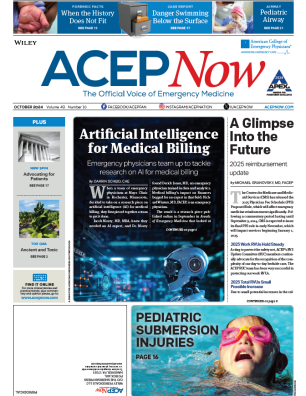Drug abuse patients are often complex in their presentation and management, but those who are pregnant add distinct elements that increase this complexity. The intent of this article is to further equip EPs with diagnostic and management information in dealing with the pregnant patient who is abusing drugs. The first part focuses on medical issues, and the last part deals with the important ethical and legal aspects.
Explore This Issue
ACEP News: Vol 31 – No 08 – August 2012Table 1 provides a clinical tool covering key principles.
Incidence
Conservative estimates of substance abuse during pregnancy range from 10% to 15%,1 a marked increase over the last 3 decades. Bottom line: just because she’s pregnant, don’t rule out drug intoxication.
General Principles
Much of the acute care is similar to nonpregnancy management. Concerns regarding teratogenic effects of drugs are highest in the first trimester of the pregnancy. Management of patients with drug toxicity in the second trimester focuses on the support of the mother to ensure the well-being of the fetus. In the third trimester, caution should be taken to avoid precipitating premature delivery or damaging the fetus, such as causing ductal closure with agents like NSAIDs.
For all patients, consider:
- As with most management decisions in pregnancy, maternal stabilization is the priority. While the mother is being stabilized, institute rapid fetal monitoring in the ED for any viable fetus.
- Coordinate with OB, L&D, and pediatrics for any imminent delivery.
- Consider polydrug use, including alcohol, and complications of some kinds of drug use (e.g., HIV, hepatitis).
- Questions regarding teratogenicity and risks to the fetus are often best reserved for the OB department and a genetic counselor. Much of the research in this area has been hampered by the confounding variables of polydrug use, including cigarettes and alcohol. Despite pessimism among many EPs, it may be worthwhile to discuss the dangers to the baby with the mother, while getting social service intervention as described later.
Neonatal Toxicity and Withdrawal
Many drugs of abuse have been associated with neonatal toxicity and withdrawal symptoms.2,3 Opiates appear to be among the most life threatening. As the EP will be admitting these OB patients who are either in labor or have delivered at home, the babies will be best managed by pediatric specialists. Communicate to the OB and pediatric team all documented or suspected drugs, as well as drugs administered in the ED.
Other Diagnostic Tests
Keep in mind the legal issues (as discussed later) regarding drug screening and other diagnostics that are not directly related to acute care. Life-threatening exceptions would generally justify drug screening to identify the cause of delirium, cardiovascular abnormalities, and so on.
Pages: 1 2 3 4 5 | Single Page





No Responses to “Drugs of Abuse in Pregnancy”